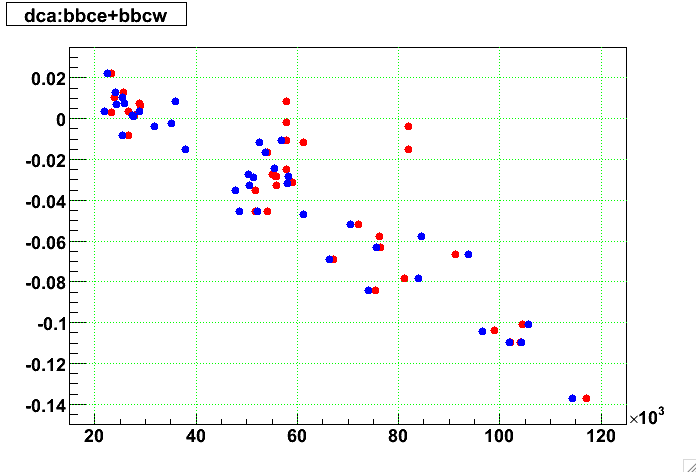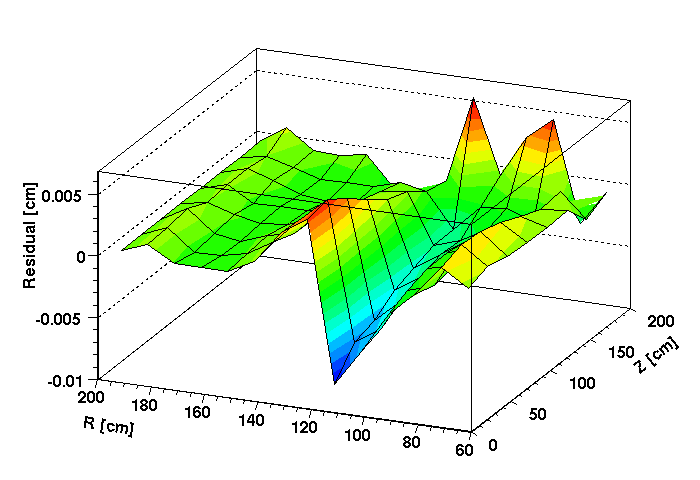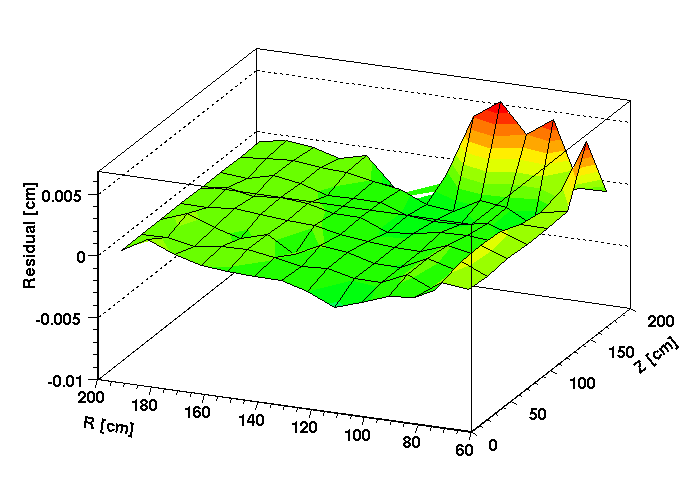CuCu22 (2005)
Comparison of RICH scalers
The low energy CuCu runs are a difficult spot for E-by-E SpaceCharge calibrations: the time-averaged multiplicity of recorded tracks traversing the TPC is unlikely to be sufficient. So we must turn back to using the RICH scalers for the calibration. In 2005, the RICH scalers were included in DAQ files with 1 second sampling, while also still getting stored in the DB with 30 second sampling, and the code to access the DAQ scalers has just been developed in December 2005, in time for the calibration of the 22 GeV CuCu data.The 1 second sampling should lead to a more accurate measure of the luminosity responsible for SpaceCharge distortions. This is demonstrated by the plot below of sDCA vs. BBC rates (or any other luminosity-related scaler, like ZDC rates). In this plot, the red points are the 30 second scalers, and the blue points use the 1 second scalers, where each point is determined from 150 uncorrected CuCu22 minbias events to get a good measure (150 events spans about 5-10 seconds in time). It is evident in this plot that the 1 second scalers lead to a more linear distribution, indicating a better 1-to-1 correspondence between sDCA and the BBC sum, in this case, which is important for the distortion correction. It is also interesting to observe that even in this small sample, the two scaler sources can disagree by as much as a factor of 2!

Calibration
The plot above shows that DCA distortions reach somewhere around 1.5 mm in the CuCu22 data. Here is the plot for the GridLeak distortions observable in the uncorrected data:
Using the Calib_SC_GL.C macro, as documented in the SpaceCharge and GridLeak Calibration How-To Guide, resulted in the following output:
root.exe [0] .x Calib_SC_GL.C("input4.dat","run!=6082047&&run!=6082010")
Found 9 dataset specifications.
*** Best scaler = bbce+bbcw [ID = 4]
* Constraint on SC x GL = 1.17e-07
* Guesses on SC = 1.39e-08 , 6.48e-09 , 1.4e-08 , 6.48e-09
* Guesses on SO = 2.4e+04 , 2.36e+04
*** FINAL CALIBRATION VALUES: ***
SC = 1.4e-08 * ((bbce+bbcw) - (2.38e+04)) with GL = 8.4After calibrations, the GridLeak distortion plots look like this:

- Printer-friendly version
- Login or register to post comments
